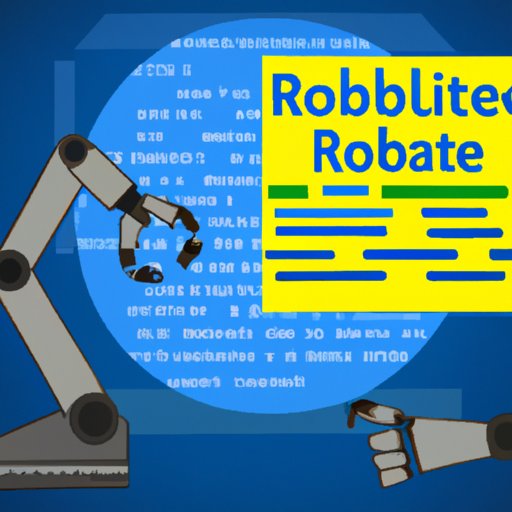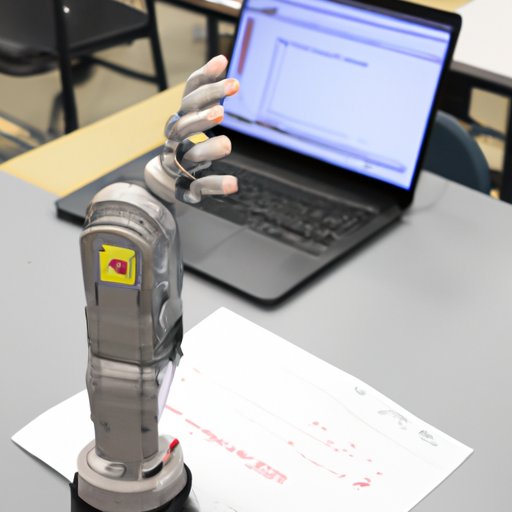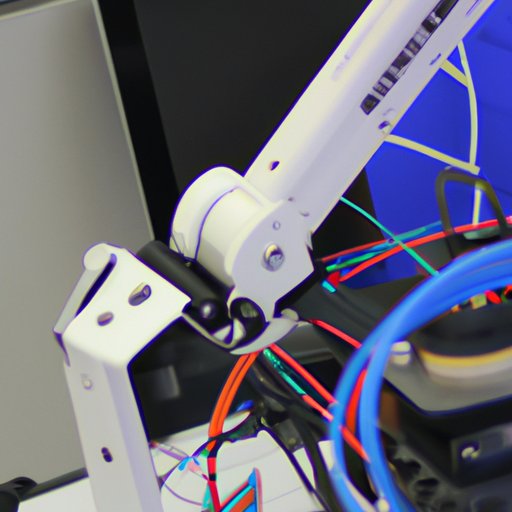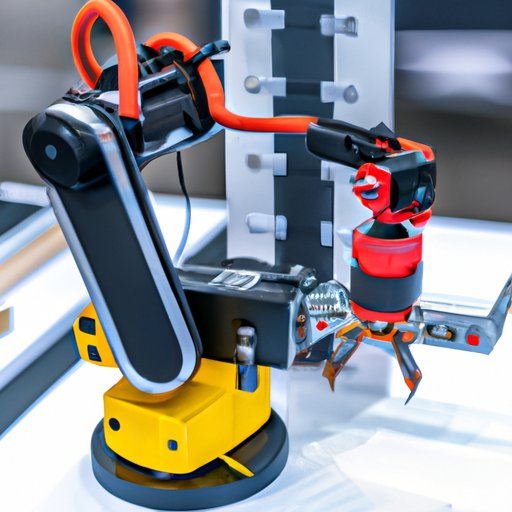Introduction
Robotic arms are robotic devices that can be programmed to perform specific tasks. They have been used in various industries for decades and are now becoming more common in everyday life. Programming a robotic arm is a complex process that requires knowledge of robotics, programming languages, and software engineering.
This article will provide a step-by-step guide to programming a robotic arm, including an overview of basic concepts for beginners, a comprehensive overview of robotic arm programming, and troubleshooting tips.
Step-by-Step Guide to Programming a Robotic Arm
Programming a robotic arm is a multi-step process that involves setting up the robotic arm, writing the program, and testing and debugging the program. Here is a breakdown of the steps involved.
Setting up the robotic arm
The first step in programming a robotic arm is to set up the physical components of the robot. This includes assembling the motors, mounting the robot onto a base, and connecting any sensors or actuators. Depending on the type of robot, this may also involve connecting wires and cables, programming the motor controllers, and calibrating the sensors. Once the setup is complete, the robot is ready to be programmed.
Writing the program
Once the robot is set up, the next step is to write the program. This involves writing code that tells the robot what to do. Different types of programming languages can be used, such as C++, Python, or Java. The code must be written in a way that the robot can understand and execute the commands correctly.
Testing and debugging the program
After the program is written, it needs to be tested and debugged. This involves running the program and making sure it works as expected. If there are any errors, they need to be identified and corrected. Once the program is working correctly, it can be used to control the robot.
Programming a Robotic Arm for Beginners
Programming a robotic arm can be daunting for beginners. To make it easier, it’s important to understand some basic concepts of robotics. This includes learning about the different components of a robot, such as sensors, motors, and actuators, and how they work together to control the robot. Understanding these concepts can help when writing the program.
It’s also important to learn how to control the robotic arm. This involves understanding how to use the programming language to give the robot instructions. There are many tutorials and resources available online that can help with this. Finally, it’s important to be familiar with common mistakes when programming a robotic arm so that they can be avoided.

A Comprehensive Overview of Robotic Arm Programming
To get a better understanding of robotic arm programming, it’s important to explore the different types of programming languages that can be used. Different languages have different features and capabilities, and it’s important to choose the right one for the job. It’s also important to understand the different components of a robotic arm, such as motors, sensors, and actuators, and how they work together.
Finally, it’s important to develop strategies for programming a robotic arm. This includes developing a plan for how the robot should move, what tasks it should perform, and how it should respond to changes in its environment. By understanding these concepts, it’s possible to create effective programs that enable the robot to accomplish its tasks.

Robotics 101: Programming a Robotic Arm
In order to start programming a robotic arm, it’s important to get familiar with the essential commands. This includes understanding how to move the robot, read data from its sensors, and control its actuators. It’s also important to understand how to work with sensors and actuators, as these are essential components of the robot. Additionally, it’s important to understand the robot’s capabilities and limitations.

Troubleshooting Tips for Programming a Robotic Arm
When programming a robotic arm, it’s important to be aware of any potential errors or problems that may arise. Debugging errors can be a difficult task, so it’s important to know how to identify and fix them. Additionally, it’s important to be aware of areas where the program can be improved, as well as when to call in a professional if needed.
Understanding the Basics of Programming a Robotic Arm
Finally, it’s important to understand the basics of programming a robotic arm. This includes being aware of safety procedures, knowing when to update the program, and applying best practices. By understanding these concepts, it’s possible to write programs that are effective and safe.
Conclusion
Programming a robotic arm can be a challenging but rewarding process. It requires knowledge of robotics, programming languages, and software engineering. This article has provided a step-by-step guide to programming a robotic arm, as well as an overview of basic concepts for beginners, a comprehensive overview of robotic arm programming, and troubleshooting tips. With the right knowledge and skills, anyone can learn how to program a robotic arm.
(Note: Is this article not meeting your expectations? Do you have knowledge or insights to share? Unlock new opportunities and expand your reach by joining our authors team. Click Registration to join us and share your expertise with our readers.)
